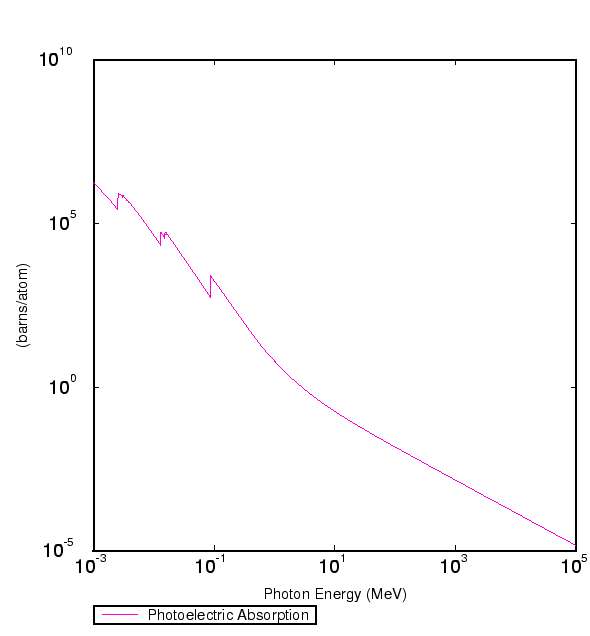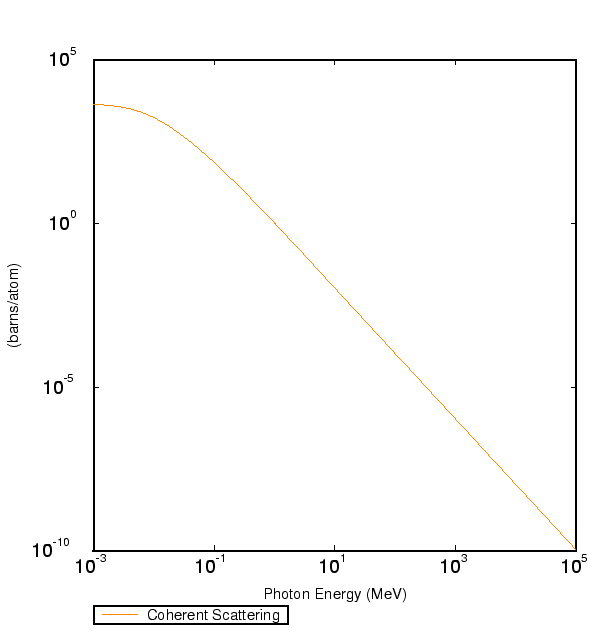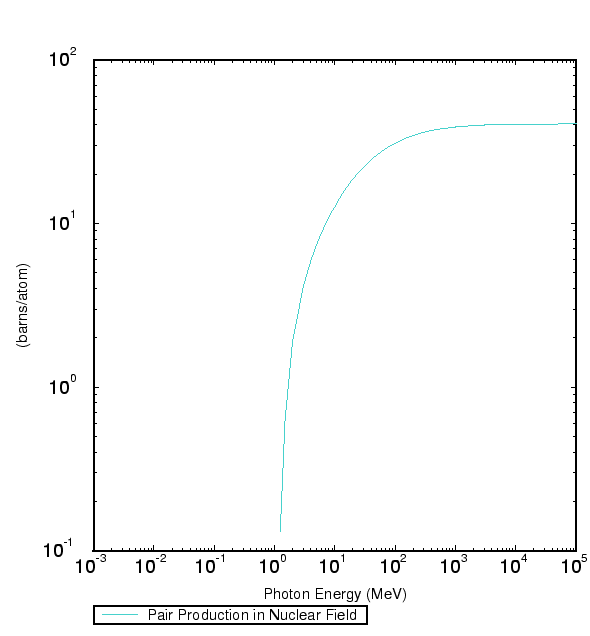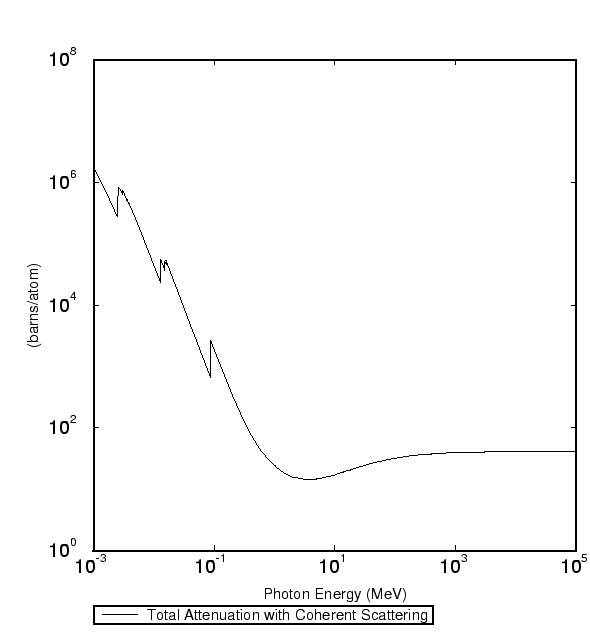PHOTONS
Photons can interact with matter via electromagnetic interaction due to three different effects that depend mainly on the energy of the photon and the atomic number Z.
* PHOTOELECTRIC EFFECT
For photon energies above the K-shell energy the photo absorption cross section is calculated to be

The absorption cross section has a complicated dependence on Z. At large energies it is proportional to Z4 or Z5.
The result for a more realistic calculation for lead is shown in the following figure:

* COMPTON EFFECT
Compton scattering is the scattering of photons on free electrons.



* PAIR PRODUCTION
In the presence of a nucleus which guarantees momentum conservation photons with energies above 1.022 MeV can transform into an electron-positron pair.
The pairproduction cross section is proportional to Z2α3 and increases logarithmically with the photon energy and is shown for lead in the following figure.

The total photo absorption cross section for lead is shown in the following figure:

The probability for pair production is closely related to the already known material characteristics, the radiation length X0. The mass absorption coefficient at high photon energies, μpair= σpair N0/A, is given by μpair=(7/9)(1/X0).
Hence, the radiation length defines the path length after which the probability for a pair production is P=1-exp(-7/9) = 54 percent.
* ELECTROMAGNETIC SHOWERS
For photons with large energies (> 10 MeV) pair production is the dominant effect. For very large photon energies electromagnetic cascades (showers) develop: in the field of a nucleus a photon converts into an electron-positron pair of high energy. These emit energetic bremstrahlung photons which, in turn, can convert into electron-positron pairs and so on. This results in an avalanche of electron-positron pairs and bremsstrahlung photons until the energy of the electrons/positrons drops below the critical energy Ec.
This is the principle to detect energetic photons or electrons/positrons with electromagnetic calorimeter in which the total energy of these particles is measured.
NEUTRONS AND OTHER NEUTRALS
Neutrons can scatter elastically on protons if present in the detector material. The recoil protons in turn lead to ionization in the detector.
In addition, various nuclear reactions, the importance of which depending on the neutron energy, may occur between neutrons and nuclei in the detector material. The ionization observed in the detector due to secondary ionization may vary significantly depending on the type of nuclear reaction and type of detector.
Finally, inelastic hadronic interactions may lead to hadronic showers in the the detector where the secondary hadronic reaction products if energetic enough lead to subsequent hadronic interactions.
Similar in line, long-living KL mesons may undergo hadronic interactions in the detector.
These kind of hadronic interactions can be used to measure the energy not only of neutral hadrons but also of charged hadrons as pions and kaons in hadronic calorimeters. The energy resolution is significantly worse compared to electromagnetic calorimeters when measuring the energy of electrons/positrons or photons.
An important material property is the hadronic interaction length, which quantifies the probability of an inelastic hadronic interaction:

Neutrinos can only interact weakly either by a charged-current or a neutral-current interaction. As the corresponding cross sections eith the electrons and/or the nuclei in the detector are small very large detector masses are necessary to detect the secondary charged particles with reasonable efficiency.